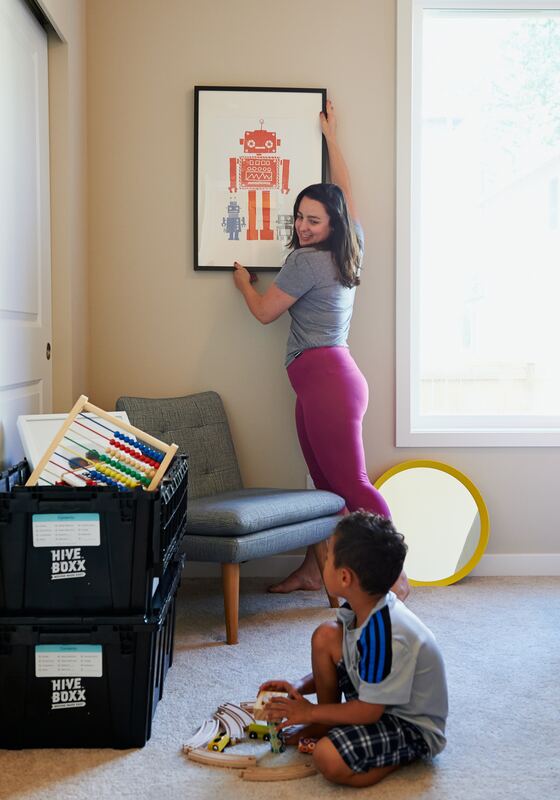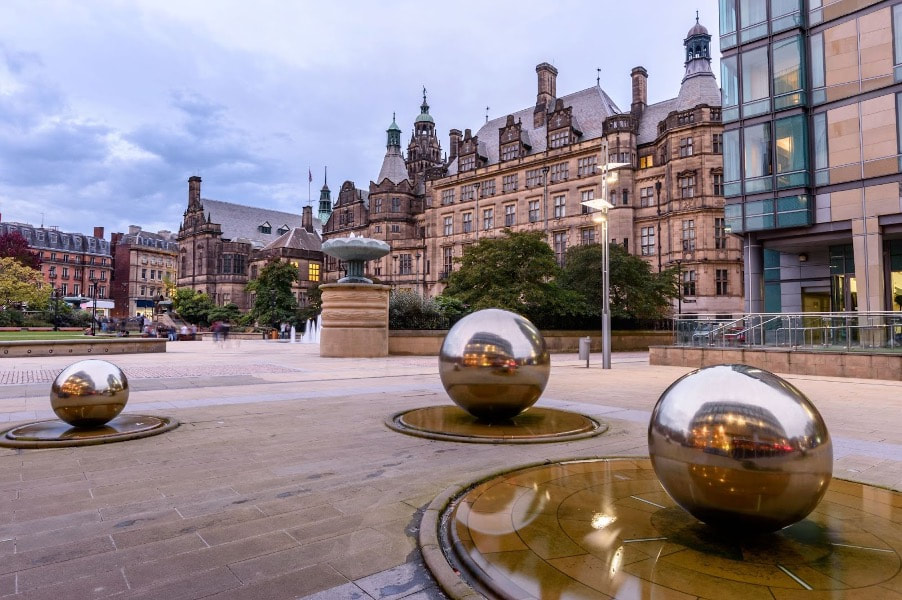|
Collaborative Post | Moving house is a notoriously stressful experience to go through. It’s hard enough doing it on your own or with a partner, but doing it with your whole family can be even more daunting. The emotional and physical impacts of having to move your whole life from one place to another shouldn’t be underestimated, but there are definitely some things you can do to help - here’s how to make the process a little smoother and more manageable. Start earlyAnyone with a family knows that you need to allot more time than you think you need for literally everything. This is especially true for complex processes like moving house. It can be very stressful for children, and you may have to take some days slower than others. The more time you have to prepare, the easier it will be for everyone. Set out a clear schedule, and pack up different rooms slowly, ensuring that there isn’t an absolutely mad rush at the end. Use a removals serviceOne of the most effective ways of making the process more manageable is to hire a professional removals service. Families tend to have a lot of stuff, from furniture to playsets, and as a result, it’s a lot less feasible to move all of those belongings on your own. Companies such as Bright Movers can take the lion’s share of the load, in some cases even helping you pack up and providing other materials. Make sure that you book your removals service of choice well in advance, to ensure that they’re available when you need them. Use childcare when necessaryWhile it can be great to keep your kids involved with many of the stages of moving, in some cases it’ll be best to have them out of the way. Consider setting up playdates on some days, or having them spend the day with another friend or family member. It’s often helpful for them to feel like they’re involved and somewhat in control of the process, but it can also be quite stressful and overwhelming at times, even for adults. Be ruthless with declutteringFamilies tend to accumulate a lot of stuff, seemingly by magic sometimes. When you move, you need to treat it as an opportunity to start afresh. You’ll likely meet some resistance along the way, and of course, you don’t want to throw away genuinely sentimental toys and items. That being said, there are likely a lot of items that you can throw away without anyone even noticing that they’re gone.
No matter how hard you try, moving house as a family will always have its ups and downs. It’s important for everyone to remember that things will get better and quieten down, and to try to treat the whole thing as an exciting adventure. Take breaks when you need to, and if tensions do flare up, remember that everyone is likely tired and stressed out. Things will get better, and the move will be over before you even know it. Disclaimer: this is a collaborative post. Collaborative Post | Your 50s can be a very fulfilling time in your life and can often bring stability, peace and the freedom to do as you please. However, a lot of people in their 50s also worry about their nearest and dearest and want to make sure they have the best life possible as well. One of the best ways to ease these concerns is by taking out life insurance, as this can provide your loved ones with financial support after you pass away. But what kind of life insurance is best for those in their 50s? Understanding life insurance over 50While it’s possible for over 50s to take out life insurance, it can pose some unique challenges that many younger people don’t face. For example, some people over 50 may have more health conditions than they did a decade or two ago and others may be approaching retirement and have limited funds. However, everyone is different and the most important thing is to find the best life insurance for your specific needs by learning about the options that are out there. Here are some that you could consider: Over 50s life insuranceThere are specific life insurance plans designed to help over 50s get the cover they need. Typically, these plans don’t need you to undergo a medical examination, which is great for anyone who is worried about their health driving up their premiums or making them exempt from cover. The catch is that over 50s plans can be more expensive than standard life insurance, so if you think you may qualify for a different policy and are in good health, that may be a better route for you. Term life insuranceIf you’re worried about the cost of life insurance, a fixed term policy could help you to stay within your budget more easily. This is great for you if you’re worried about your partner covering the last 10 or 15 years of your mortgage, as you can take out life insurance to cover this period and no more. However, do keep in mind that if something unexpected happens and your mortgage needs paying for longer, your term policy won’t cover the extra few years. You may need to take out a new policy or speak to your provider to find out your options. Whole life insuranceTo have cover for the rest of your life, you’ll need a whole life insurance policy. This means that no matter when you die, your loved ones will receive a payout. Like an over 50s plan, it is more expensive, but you do benefit from having complete security and protection. If your grown-up children rely on your support or your partner needs your income or pension to survive, a whole life policy may be worth the extra cost.
Finding the right life insurance when you’re over 50 can be difficult, but it’s definitely possible once you figure out your priorities. Spend some time understanding exactly what you want and then go out and search for a policy to match. Disclaimer: this is a collaborative post. Collaborative Post | Serving as a gateway to the rocky moors of Peak District National Park, Sheffield is a historic South Yorkshire city with a rich industrial past. It was an important producer of steel during the Industrial Revolution, with several of its former factories now transformed into cultural institutions. Sheffield is a city that has reinvented itself in recent years, with a bustling urban core, picturesque green spaces and one of Europe’s most impressive glasshouses. If you’re planning a getaway to South Yorkshire, we have you covered, with 8 of the top attractions and landmarks in Sheffield. When it comes to finding accommodation, consider holiday rental platforms such as Rentola Sheffield, where you can easily find accommodation to suit. Whether you’re after a city centre apartment or a family-friendly house in one of Sheffield’s neighbourhoods, there are options to meet all budgets. Alternatively, you may prefer a country cottage in Peak District National Park, from where you can visit Sheffield’s attractions and landmarks as a day trip. Sheffield CathedralOfficially known as the Cathedral Church of St Peter and St Paul, this monumental building dates back to the early 13th century. That being said, the site has been used for around 1,000 years for Christian worship, with its fascinating history explored at the Heritage Interpretation Centre. While discovering the changes that have been made to the cathedral over the years, don’t miss the Shrewsbury Chapel, built to house the Earl’s Tudor collection, or the bayonets and swords that are on display in St George's Chapel. Millenium GalleryIn the heart of Sheffield is the Millennium Gallery, which occupies a striking glass and concrete building that opened to the public in 2001. It functions as both an art gallery and a museum, with two permanent collections on display, alongside temporary exhibitions. Browse the watercolours, minerals and coins collected by the English philosopher John Ruskin before admiring the Sheffield-manufactured cutlery and teapots of the Metalware Collection. The Millennium Gallery regularly hosts travelling exhibitions from London’s Victoria & Albert Museum and the Tate. Sheffield Winter GardenAdjacent to the Millennium Gallery is the Sheffield Winter Garden, which holds the title of Europe’s largest urban glasshouse. This award-winning structure houses more than 2,500 temperate plants from around the globe while providing a green oasis in the heart of the city. Marvel at its arched, eco-friendly design before stepping inside to explore the paved walkways. Within the Winter Garden is a cafe where you can grab drinks and light meals throughout the day. Kelham Island MuseumSheffield’s industrial past is showcased at the Kelham Island Museum, which occupies the site of a 19th-century iron foundry in the middle of the River Don. Its interactive exhibits detail its conversion into a power station, which operated until the 1930s. Today, the Kelham Island Museum is home to reconstructed workshops and a heritage-awarded Bessemer converter that was once used for the mass production of steel. Be sure to watch the 1905-built River Don Engine as it is brought to life. Weston Park MuseumOne of Sheffield’s most family-friendly museums lies on the edge of Weston Park, adjacent to the University of Sheffield campus. It tells the story of the city from prehistoric times to the present day through engaging exhibits and multimedia displays. Discover how life in Sheffield has changed over the years and the animals that inhabit the surrounding area, then get up close to works by local artists. Kids will love “Spike the Woolly Rhino” in the What On Earth! exhibit and getting hands-on in the Picturing Sheffield gallery. Sheffield Botanical GardensLocated on the western outskirts of the city, the Sheffield Botanical Gardens is a Grade II-listed green space that’s home to more than 5,000 different plant species. It was originally created in the 1830s by the Sheffield Botanical and Horticultural Society, with several beautiful glass pavilions designed by Benjamin Broomhead Taylor still dotting the gardens today. As you wander through its themed gardens, keep an eye out for the 2.5-metre-tall statue of “Robert the Bear”. Musical concerts and theatrical events are held in the gardens throughout the year. Abbeydale Industrial HamletA short drive south of Sheffield will take you to this open-air museum on a site where iron has been forged for around 500 years. Located on the banks of the River Sheaf, it consists of workshops and cottages from a Grade I-listed scythe-making plant that operated until the 1930s. As you wander between its 18th and 19th-century buildings, you can learn about the process of making and refining steel with the help of a water wheel, as well as life for the workers here in times gone by. Moor MarketClustered with more than 90 independent retailers, the Moor Market is the place to head for fresh produce, artisan goods and handmade crafts. It occupies a modern building in Sheffield’s Moor Quarter, with a focus on organic and locally-sourced products. Browse the vibrant displays of fruits, vegetables and baked goods or pick up healthy meals in the bustling food court. In addition to gourmet fare, you’ll also find vintage homewares, hand-crafted jewellery and beautiful textiles.
Disclaimer: this is a collaborative post. |
Search my blog ...Categories ...Read my latest blog post!Subscribe below to receive regular updates by email:
Archives
July 2024
|





